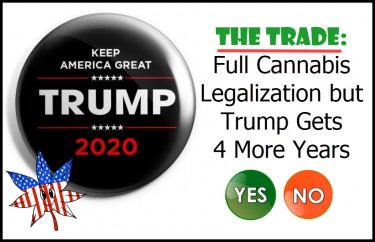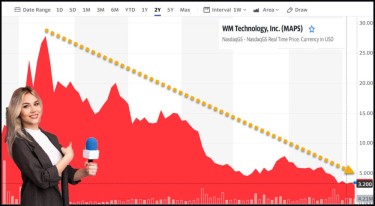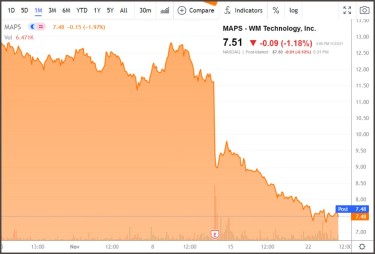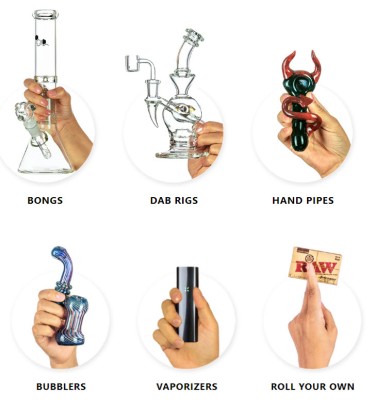The War on Marijuana has always been a propaganda war.
One hundred years ago, Americans learned everything they thought they needed to know about cannabis not from doctors, scientists, patients, scholarly journals or even aficionados, but from the newspapers. In particular those owned by OG media baron William Randolph Hearst.
On January 31, 1923, millions of Hearst readers coast-to-coast woke up to the following headline:
Marihuana Makes Fiends of Boys in 30 Days; Hasheesh Goads Users to Blood-Lust
By the tons it is coming into this country, the deadly, dreadful poison that racks and tears not only the body, but the very heart and soul of every human being who once becomes a slave to it in any of its cruel and devastating forms…. Marihuana is a short cut to the insane asylum. Smoke marihuana cigarettes for a month and what was once your brain will be nothing but a storehouse of horrid specters. Hasheesh makes a murderer who kills for the love of killing.
Hearst’s reporters backed up their claims with outlandishly fictional data. His newspapers once reported that it was possible to “grow enough marijuana in a window box to drive the whole population of the United States stark, staring, raving mad.”
For those unfamiliar with cannabis: No, that’s not possible.
Today’s version of the Hearst machine
Today, the propaganda campaign against cannabis is a bit more subtle. But its central theme—that cannabis is to blame for a plague of violent crime—comes straight out of the Reefer Madness era.
In recent years Fox News has become the modern-day version of Hearst newspaper empire, with a powerful voice and a predilection for hyping fictional fears into national panics.
Laura Ingraham and Tucker Carlson have been working overtime in their attempts to link mass shootings to cannabis use. But there is no link.
Two of the cable network’s highest rated hosts, Tucker Carlson and Laura Ingraham, have been working overtime in their efforts to blame cannabis use as the cause of mass shootings.
Carlson recently included “high-end, government endorsed weed” among the social ills he blamed for supposedly leading young men to turn homicidal. Ingraham, for her part, claimed that “there is mounting scientific evidence of a connection between the increase in violent behavior among young people and regular sustained cannabis use.”
Spoiler alert: There is no “mounting evidence.”
Connecting dots that don’t connect
In both instances, the Fox News hosts were clearly deflecting attention away from the national debate around gun control by offering their viewers an alternative explanation: It’s the demon weed. Every minute spent blaming cannabis is a minute not spent on a serious discussion about how easy it is for mentally ill Americans to access semi-automatic weapons.
Even the traditionally more respectable members of the right wing media have taken to fear-mongering around a supposed link between cannabis and psychosis. The Wall Street Journal warned its readers with a piece headlined Cannabis and the Violent Crime Surge. National Review added Marijuana and Mass Shooters. The New York Times ran a tamer version of the story, under the catch-all headline: Psychosis, Addiction, Chronic Vomiting: As Weed Becomes More Potent, Teens Are Getting Sick.
At best, these articles offer a hodgepodge of logical fallacies, straw man arguments, ad hominem attacks, “expert shopping,” and cherry picked statistics. At worst, they claim without a shred of direct evidence that cannabis has played a central role in horrific killing sprees—reinforcing the most dangerous kinds of stereotypes.
‘Cropaganda’ takes root on Fox News
A hallmark of propaganda is that opposing facts and analyses are either outright ignored or purposely misconstrued. For instance, none of the above sources mention an extensive RAND Institute study—published in 2013 by the federal Office of National Drug Control Policy (home of the “Drug Czar”)—that reviewed a decade’s worth of data and flatly concluded “marijuana use does not induce violent crime.”
And only rarely do they present opposing viewpoints.
I’ve had the dubious honor of debating the issue with Tucker Carlson in front of his millions of viewers. The show’s producer invited me on in 2019 after I wrote a Leafly article debunking claims Carlson and a guest had made on air. In our televised confrontation, Carlson gave no indication that he’d bothered to read the article, never mind respond to my arguments therein.
Instead he talked over me and spouted the very talking points I’d just carefully debunked.
To paraphrase Jon Stewart, it was not debate, but rather theater.
Which gets to the final distinguishing characteristic of propaganda. It’s meant to serve as a kind of morality play, in service of promoting a specific agenda.
In this case, that agenda is the reversal of cannabis legalization.
A skewed viewpoint, repeated endlessly
It’s been said that there’s nothing more dangerous than someone who’s only read one book. And for the modern anti-cannabis wrecking crew, that book is very clearly Tell Your Children: The Truth About Marijuana, Mental Illness, and Violence by Alex Berenson.
Berenson’s book made a big media splash in 2019 . The author hit the media hard, claiming to have found a previously unreported national outbreak of cannabis-induced psychosis. But then came the backlash. People who actually know what they’re talking about started weighing in. That pushback culminated in a letter signed by 100 scholars and clinicians that labeled the book “a polemic based on a deeply inaccurate misreading of science.” .
“We need to have thoughtful debates about the benefits and risks of marijuana legalization, and those debates should be grounded in science,” said Sheila Vakharia PhD, Policy Manager at the Drug Policy Alliance’s Office of Academic Engagement. “Unfortunately, Berenson’s book is the worst kind of misuse of science to advance a political agenda.”
That agenda that was, sadly, on full display in Washington, DC, last week, when Berenson addressed a Senate subcommittee hearing on federal cannabis reform. He was the Republicans’ choice to provide expert testimony, despite having no credentials whatsoever in science, medicine or criminal justice.
His main qualification, it would seem, is his willingness to twist the truth and misrepresent scientific research.
Cannabis Legalization is Not ‘Settled Law’
For the more than 40% of the American population living in legal states, it’s tempting to think of the right to possess and consume cannabis as inalienable. But there’s no Supreme Court ruling or federal law backing up any such right. In fact, federal law still considers cannabis a Schedule I drug, making it technically illegal even for stage 4 cancer patients in California going through chemo to smoke a joint.
Also—as recent history shows—even long settled law can be overturned in an instant.
So while we needn’t take Alex Berenson or his arguments seriously, we must take seriously their wider adoption by the media and the political class. Tell Your Children is not just the name of Berenson’s book, it’s also the original title of the film Reefer Madness.
That film hit theaters just a year before passage of the 1937 Marijuana Tax Act outlawed cannabis federally for the first time. People like Berenson push propaganda because it works. It’s up to us to push back.
By submitting this form, you will be subscribed to news and promotional emails from Leafly and you agree to Leafly’s Terms of Service and Privacy Policy. You can unsubscribe from Leafly email messages anytime.







